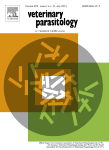Dvelopment of a direct PCR assay to detectTaenia multiceps eggs isolated from dog feces
Ning Wang, Yu Wang, Qinghua Ye, Yingdong Yang, Jie Wan, Cheng Guo, Jiafei Zhan,
Xiaobin Gu, Weimin Lai, Yue Xie, Xuerong Peng, Guangyou Yang

Abstract
Taenia multicepsis a tapeworm that leads to the death of livestock, resulting in major economic losses worldwide. The adult stage of this parasite invades the small intestine of dogs and other canids. In the present study, we developed a direct PCR assay to detectT. multicepseggs isolated from dog feces to help curb further outbreaks. The genomic DNA was rapidly released using a lysis buffer and the PCR reaction was developed to amplify a 433-bp fragment of theT. multicepsmitochondrial gene encoding NADH dehydrogenase subunit 5 (nad5) from eggs isolated from dog feces. The procedure could be completed within 3 h, includingflotation. The sensitivity of the assay was determined by detecting DNA from defined numbers of eggs, and the specificity was determined by detecting DNA from other intestinal tapeworm and roundworm species that commonly infect dogs. In addition, 14 taeniid-positive fecal samples determined by theflotation technique were collected and further evaluated by the regular PCR and our direct PCR. The results showed that the direct PCR developed herein was sensitive enough to detect the DNA from as few as 10T. multicepseggs and that no cross-reactions with other tapeworm and roundworm were observed, suggesting its high sensitivity and specificity forT. multicepsdetection. Moreover, 14 taeniid-positive samples were screened by the regular PCR and direct PCR, with detection rates of 78.6% and 85.7%, respectively. In conclusion, the direct PCR assay developed in the present study has high sensitivity and specificity to identifyT. multicepseggs isolated from dog feces and therefore could represent an invaluable tool to identifyT. multicepsoutbreaks and would contribute to future clinical applications.
copyright:©2017 Elsevier B.V. All rights reserved.
Veterinary Parasitology 251 (2018) 7–11.doi.org/10.1016/j.vetpar.2017.12.017
Read Full Text: https://doi.org/10.1016/j.vetpar.2017.12.017